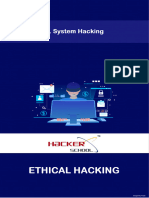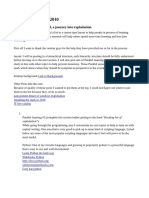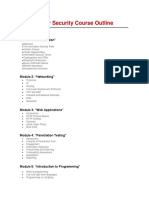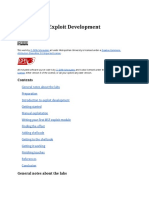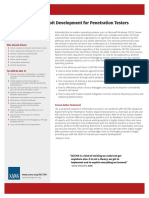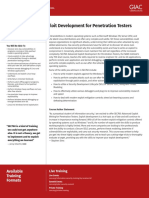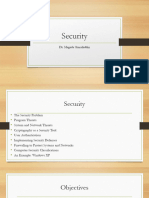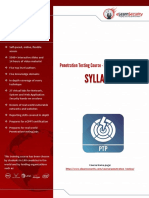0% found this document useful (0 votes)
116 views3 pagesCise Level 2 - Exploit Writing
This document provides an outline for a training course on exploit writing. It covers topics such as programming basics in Python, assembly language, debugging tools, stack-based buffer overflows, Windows shellcode, fuzzing, heap overflows, bypassing protections like GS canary and DEP, advanced shellcoding techniques, DLL hijacking, client-side exploits, the Metasploit framework, and binary payloads. The document aims to teach students the technical skills needed to find and develop exploits.
Uploaded by
Innobuzz HRCopyright
© © All Rights Reserved
We take content rights seriously. If you suspect this is your content, claim it here.
Available Formats
Download as PDF, TXT or read online on Scribd
0% found this document useful (0 votes)
116 views3 pagesCise Level 2 - Exploit Writing
This document provides an outline for a training course on exploit writing. It covers topics such as programming basics in Python, assembly language, debugging tools, stack-based buffer overflows, Windows shellcode, fuzzing, heap overflows, bypassing protections like GS canary and DEP, advanced shellcoding techniques, DLL hijacking, client-side exploits, the Metasploit framework, and binary payloads. The document aims to teach students the technical skills needed to find and develop exploits.
Uploaded by
Innobuzz HRCopyright
© © All Rights Reserved
We take content rights seriously. If you suspect this is your content, claim it here.
Available Formats
Download as PDF, TXT or read online on Scribd
/ 3



